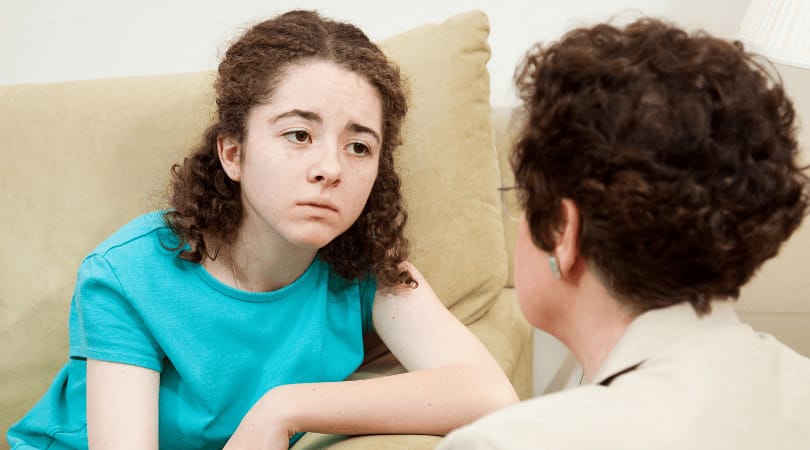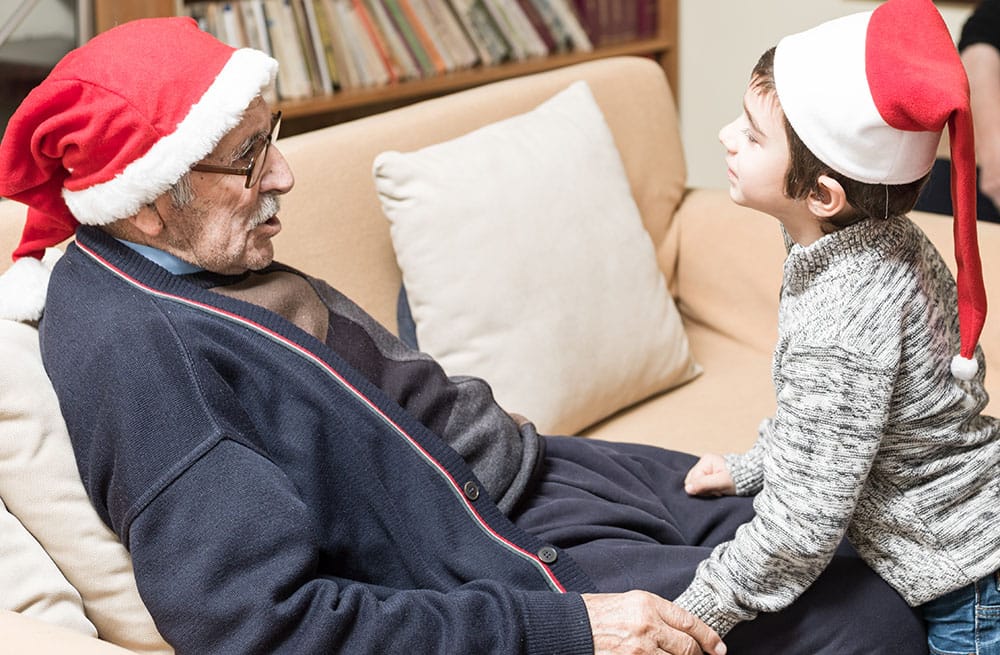Children, Grief, and the Holidays: 9 Tips to Support Grieving Children this Holiday Season

The holiday season is often filled with joy, togetherness, and family traditions. But for grieving children, it can be a time of confusion, sadness, and longing. Celebrations may feel incomplete without a loved one present, making it essential for adults to help children process their feelings and find meaningful ways to honor the person they have lost.
Children experience grief differently than adults, often moving between moments of play and sudden sadness. They may not have the words to express their emotions, so their reactions can range from irritability and withdrawal to unexpected bursts of joy. Adults can play a vital role in supporting children through this complex experience, providing comfort and understanding during a season that is typically focused on happiness.

Tips for helping children cope with grief during the holidays.
1. Have open conversations.
Allow children to share their feelings openly, without fear of judgment or discomfort. Talking about the person who has died, even during the holidays, can help normalize the grief process. Avoid euphemisms like “went to sleep,” as these can create confusion. Instead, use clear language, such as “died” and “death,” and provide reassurance that all emotions are welcome.
2. Understand their developmental stage of grief.
Children’s understanding of death varies by age and emotional maturity. According to the Children’s Hospital of Philadelphia:
- Infants and toddlers may have no concept of death or see it as separation.
- Preschoolers may view death as reversible, often seeing it like in cartoons.
- School-aged children begin to grasp that death is permanent and universal, though they may personify it.
- Adolescents typically understand that death is inevitable, though their experiences with loss may shape their responses.
Supporting children’s unique understanding of death allows you to tailor conversations to their developmental level, helping them feel secure and understood.
3. Don’t pretend the death didn’t occur.
While it may feel natural to avoid talking about the loss to protect children, acknowledging and remembering the person can provide relief and clarity. It’s okay to express sadness in front of children, as it shows them that grieving is a shared experience. By being open about your own feelings, you can encourage children to share theirs.
4. Encourage them to celebrate.
Resist the urge to skip holiday traditions, even if they feel overwhelming. Children still need opportunities to “just be kids,” and should be able to experience joy without guilt. If certain traditions feel too painful, discuss with your child which traditions they’d like to keep or modify to create a holiday celebration that feels right for everyone.
5. Ask them how they’d like to handle the holidays.
Children often have their own ideas about what would feel right or comforting during the holidays. Ask them for their input. Do they want to keep certain traditions, or would they like to create new ones? Respect their wishes, as it gives them a sense of control and helps them process their grief.
6. Involve them in planning new traditions.
Introducing new traditions can help children honor their loved one in a way that feels meaningful. Some ideas include:
- Creating a remembrance meal: Cook or bake a dish the person loved together.
- Lighting a candle: Keep a candle burning in their honor.
- Making a special ornament: Create an ornament that reminds them of their loved one.
- Playing a favorite song: Share a song that connects to a memory.
- Giving back: Donate toys, food, or time in the loved one’s memory.
New traditions can help create moments of comfort and joy while honoring the person’s memory.
7. Use art and rituals for emotional expression
Art and ritual can help grieving children express emotions they may struggle to articulate. Creative activities like drawing, making a memory box, or creating a rock garden provide children a sense of control and a way to remember their loved one. These practices allow children to process grief in a personal, meaningful way.
8. Reflect on past holiday memories together.
Take time to reminisce about favorite holiday moments with the person who has passed. Looking through photos, sharing stories, or listening to a song they loved can bring comfort and help children feel connected. Encourage them to draw or create something that represents a favorite memory if they feel like expressing themselves in a different way.
9. Attend a holiday memorial celebration as a family.
Many communities hold holiday memorial events, like candle-lighting ceremonies, where grieving families can gather in a supportive environment. Participating as a family offers a sense of community, honoring the memory of the loved one together and reminding children that they’re not alone.
10. Utilize outside resources.
Outside resources can greatly support a grieving child. School provides routine and respite, so informing teachers and counselors early on ensures they can offer extra understanding. Staying in touch with educators helps address any changes in the child’s behavior or performance. Additionally, community-based grief groups provide a safe space for children to connect with others facing similar experiences, giving them comfort and guidance through their grief.
11. Stick to a routine.
Maintaining familiar routines, even during the holidays, can provide a sense of stability and security for grieving children. Though the season may bring disruptions, try to keep regular schedules for meals, bedtimes, and other daily activities. Structure can help children feel grounded amidst the emotional upheaval of grief.
Loss touches everyone differently. Keep the lines of communication open with children who are grieving and remind them often that they are safe and loved.
For information on the grief support programs from Crossroads Hospice & Palliative Care, please call 855-327-4677.
If you found this information helpful, please share it with your network and community.
Copyright © 2020 Crossroads Hospice & Palliative Care. All rights reserved.



